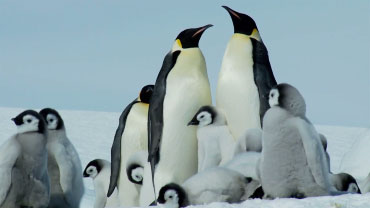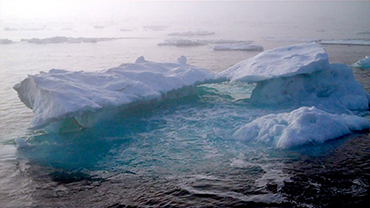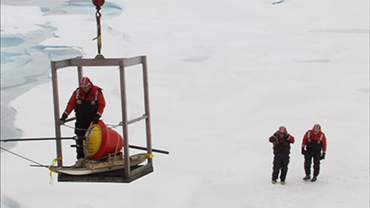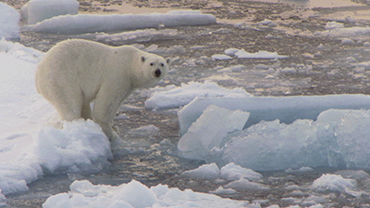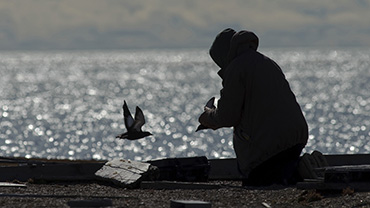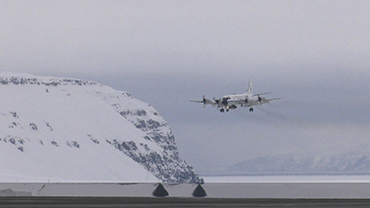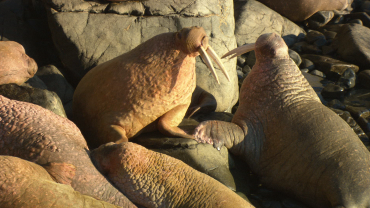Transcript
Dr. George Divoky:
Things have gotten much warmer very quickly in the Arctic after a period of gradual increases in temperature.
I’m Dr. George Divoky, I’m Director of Friends of Cooper Island, a non-profit, and I have been studying Black Guillemots, an Arctic seabird, for the past forty-two years on an island off northern Alaska where climate change has greatly impacted the birds breeding on the island.
Every summer I spend three months on the island. I lived in a tent for the first about twenty-eight years of the study, but then after Polar Bears started coming to the island I got a cabin for my safety and live there now behind an electric fence and inside the cabin.
The bears are there because of the fact that the ice is melting and the sea ice melting is also taking the food away from the bird I have been studying, so that the parent birds are having a hard time trying to find food for their nestlings.
Black Guillemots specialize in Arctic Cod, a species that lives directly under sea ice, and as the climate has warmed it has retreated further and further offshore every summer, so that Guillemots can no longer fly out to the ice. The fish are no longer available, and they have to turn to alternate prey, or feed their young less, and as a result their breeding success has declined.
The chart showing the average annual temperature in Barrow gives you an idea of how cold or warm a given year was, and plotting a long time series as the chart does now up until 2016 you can see the trend as to what is happening.
And that trend, which was gradual up until recently, took a major jump in 2016 so it is that major change that we can see, and having all those earlier years, having those records is very important because we can put 2016 into context, and the context is very scary, which is why it’s a large red dot.
One of the shortcomings of charts is that they typically show physical data like temperature. Where the red dot is I lived on my island in the Arctic for three months in 2016 and saw major changes. I saw birds breeding earlier than they ever have. I saw chicks not being able to be fed by their parents. I saw Polar Bears swimming to the island, so that red dot really encompasses all that and if you just look at the chart you don’t pick up all those things I saw.
One of the important things about my study is that it is the longest, uh, such study in the Arctic Basin and even though I’m on one island, anywhere where the ice is retreating in the Arctic, and there are many seabird colonies in the Arctic. There are certainly similar changes taking place, with birds being unable to find food that up until recently they could always find, so this really is a site to monitor what is happening to an ecosystem and then being able to say, O.K., this is probably happening throughout the whole Arctic Basin.
What has been important to me about doing the study is that I have been able to go up to the Arctic every year and follow some of the same individuals that are breeding on the island. I band the birds and I have had birds live for thirty-three years, that I have been able to track how many young they are raising and see their young coming back, and that sort of continuity gave me a personal connection that I can go back and see birds that I have color bands on and I can tell who they are. That is really one of the main reasons I have been going back. And then as the Arctic started changing and I saw the same individuals struggling, it gave me a personal connection with these individuals that, O.K., how are you going to deal with the fact that the ice is as far as it is offshore?
The graph showing 2016, being as warm as it was, is a major impetus for me to get out and tell the story behind 2016. Even though it’s very depressing I’m very motivated to get out and share my observations with people because many people don’t have to experience what I experienced in summer every year in the Arctic and I can go back and say this is what I saw, this is what I experienced, this is what is going on due to climate change and let me tell you about it because it’s happening quickly and many people have come up to me and said, “I now have a story about climate change that I didn’t have before.”
This is certainly why I keep doing it and why I can’t stop.
I think the most important thing that the younger generation can do is be very well aware, on a daily basis, of what is happening with climate and not casually read any climate change stories and don’t let it become normalized like, oh yes this is the warmest year on record and sure, because last year was too. And as a result talk to your parents, talk to your teachers, talk to your friends, have it be a part of your life because it IS part of your life even though you may not experience that every day the way the Guillemots do on Cooper Island.
 An official website of the United States government.
Here's how you know we're official.
An official website of the United States government.
Here's how you know we're official.


